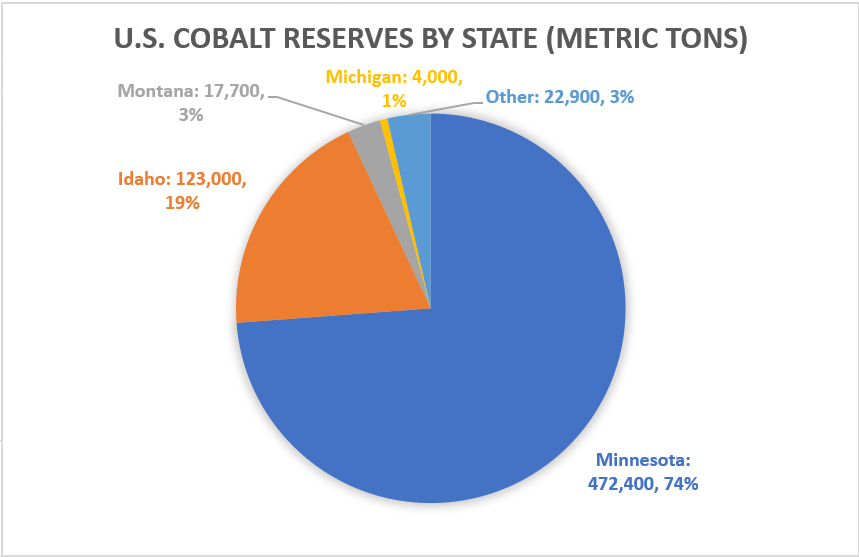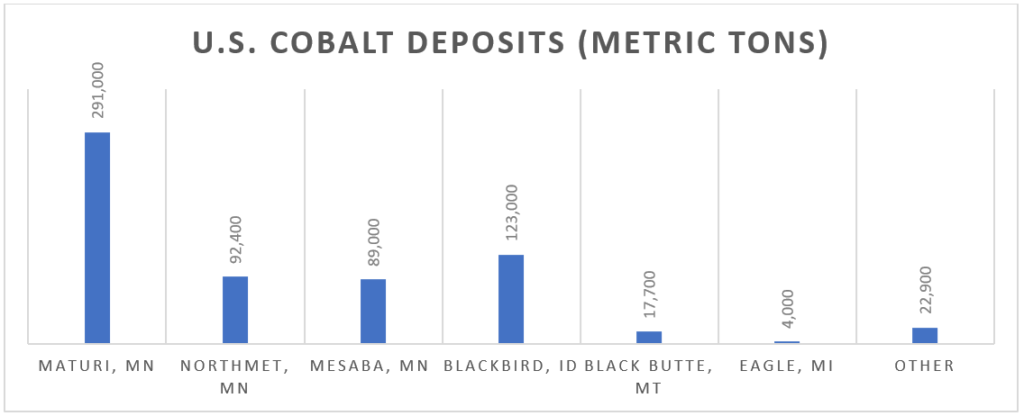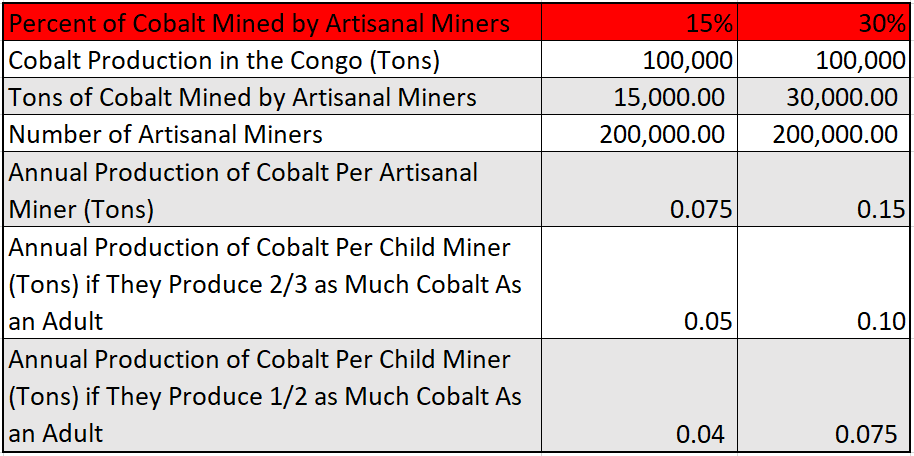Can Mining in Minnesota Reduce Child Labor in the Congo?
Cobalt has become a controversial topic in the debate over copper nickel mining in Minnesota’s Duluth Complex. This metal, which is used in the lithium ion batteries in laptops, tablets, and electric cars, has become a lighting rod because most of the cobalt produced in the world comes from the Democratic Republic of the Congo (DRC), where some of the cobalt is mined using child labor.
Virtually everyone has a cellphone, laptop, or tablet that has a battery requiring cobalt. This has led many people to ask the question, can mining in Minnesota reduce the demand for unethically mined cobalt in the Congo?
Global Cobalt Production
According to the United States Geological Survey (USGS), global cobalt production was around 140,000 tons, of which 100,000 tons, or 70 percent, was mined in the DRC. In contrast, the United States produced just 500 tons, or 0.5 percent of the global total.
Most of the cobalt mined in the DRC was a byproduct of copper and nickel mining at large operations that do not use child miners. However, approximately 15 to 30 percent of the cobalt mined in the DRC came from artisanal miners, or in layman’s terms, mined by hand.
The Financial Times estimates there are between 150,000 and 200,000 informal cobalt and copper miners in the DRC, and the latest research from the United Nations Children Fund found that as many as 40,000 children, some as young as four years old, work in cobalt mines.
The amount of cobalt mined by hand, and the number of miners mining it, is difficult to estimate because these numbers can fluctuate significantly based on the price of cobalt because according to Reuters, artisanal miners act as the global “swing producer.”
This means that during periods of low cobalt prices, such as those seen in the early part of the last decade, artisanal production falls as miners switch to more lucrative metals such as gold or switch to other pursuits. When the price of cobalt increases, such as during 2017 and 2018, artisanal production increases as miners return to cobalt sites.
Minnesota’s Cobalt Deposits
Some anti-mining groups argue that mining in Minnesota would not stop a single child miner from mining cobalt in the Congo, but is this true?
Minnesota is home to the largest deposits of cobalt in the United States, according to the Critical Minerals Summary compiled by the USGS. According to USGS data, U.S. cobalt reserves sit at around 640,000 metric tons, and just three of Minnesota’s copper-nickel deposits, the Maturi, Mesaba, and NorthMet, constitute 74 percent of this total.

Minnesota’s cobalt is found in the same rocks that contain the state’s copper and nickel reserves, and cobalt would be a by-product of mining for other metals. The Maturi deposit would be developed by Twin Metals, the NorthMet deposit by Polymet, and the Mesaba deposit would be developed by Teck American.
You can see how Minnesota’s cobalt deposits stack up against other deposits throughout the country in the graph below.

Of these deposits, only the NorthMet deposit has detailed estimates of the expected cobalt production once the PolyMet mine begins operation.
Can Mining in Minnesota Make A Difference?
Minnesota has some of the largest undeveloped copper and nickel deposits in the world, and mining these metals would also yield cobalt. According to the technical report for PolyMet submitted to the Minnesota Department of Natural Resources, the mine would produce approximately 155 tons of cobalt annually, if the mine processes 32,000 tons of ore per day.
This would equate to about 0.11 percent of global cobalt production in 2019, and 0.15 percent of production from the DRC. This is a small fraction of global cobalt production. However, if we look at the amount of cobalt produced by PolyMet in terms of cobalt produced by artisanal miners, the outlook begins to change.
Based on the estimates above, artisanal cobalt mining accounted for between 15,000 and 30,000 tons of cobalt in 2019. There were 200,000 people working as artisanal cobalt miners, which would bring the amount of cobalt mined per artisanal miner between 0.075 tons, and 0.15 tons per year.
Approximately 40,000 of the artisanal miners are children. If we assume these children produce less cobalt than adult miners, then the amount of cobalt mined in Minnesota, relative to the amount mined by kids in the DRC becomes more significant.

If these production assumptions are correct, and I want to stress that they are just assumptions, then we begin to see that while PolyMet would produce only a small amount of the cobalt currently mined in the DRC, it would actually represent a significant amount of cobalt production compared to the production of child miners.
The table below shows the number of child miners that would be needed to match PolyMet’s cobalt production based on their mine plan submitted to the DNR, as well as two other potential mine expansion plans that are speculative at this time.

As you can see, the current mine plan, processing 32,000 tons of ore per day, would produce enough cobalt to offset the cobalt produced from between 1,552 to 4,133 child miners in the Congo. If the mine is expanded in the future, the number of child miners needed to offset PolyMet’s cobalt production would increase.
In a scenario where the PolyMet mine is expanded to process 118,000 tons of ore per day, the number of child miners needed to meet PolyMet’s production would be the largest, ranging from 4,154 child miners, to 11,067 child miners, depending on your assumptions for how much of the DRC’s cobalt production in 2019 came from artisanal mines and cobalt produced per child miner. It should go without saying, but the more we mine in Minnesota, the more child miners’ worth of cobalt we would produce.
It is also worth noting the cobalt content in the NorthMet deposit is the smallest of the three deposits mentioned above, meaning other copper-nickel mines in Minnesota would increase the amount of cobalt produced in our state. Unfortunately, detailed mine plans are not yet available for these other deposits, so we are unable to estimate their potential contribution at this time.
While producing more cobalt in Minnesota will be a good thing for our economy, it is important to remember that it won’t necessarily result in a ton for ton reduction in child-mined cobalt. This is because cobalt is a global commodity, meaning new supply into the market will not automatically be used to shut down the mines employing children in the Congo.
There is reason to believe that producing cobalt in Minnesota will help, though. There is growing demand for ethically sourced products, whether they be fair trade coffee, ethically mined diamonds, or cobalt. It’s not hard to imagine a scenario where tech companies, who are currently being sued for using unethically sourced cobalt, would want to advertise the fact that they purchased ethically-mined cobalt from Minnesota equaling the output of thousands of child miners in the Congo.
The moral of the story is that Minnesota can’t single-handedly replace the need for cobalt from the Congo, and I think it is true that children will continue to mine cobalt there in some capacity whether we mine here or not. But I do think it is wrong to say that mining in Minnesota will not prevent a single child miner in the DRC, especially given the concerted effort companies around the globe are making to ensure they are getting their cobalt from responsible sources.
As Mahatma Ghandi once said, “We must be the change we wish to see in the world,” and unless the change we wish to see is more child miners, we should develop Minnesota’s nation-leading cobalt deposits.
If Minnesota won’t lead on ethical mineral development, then who will?